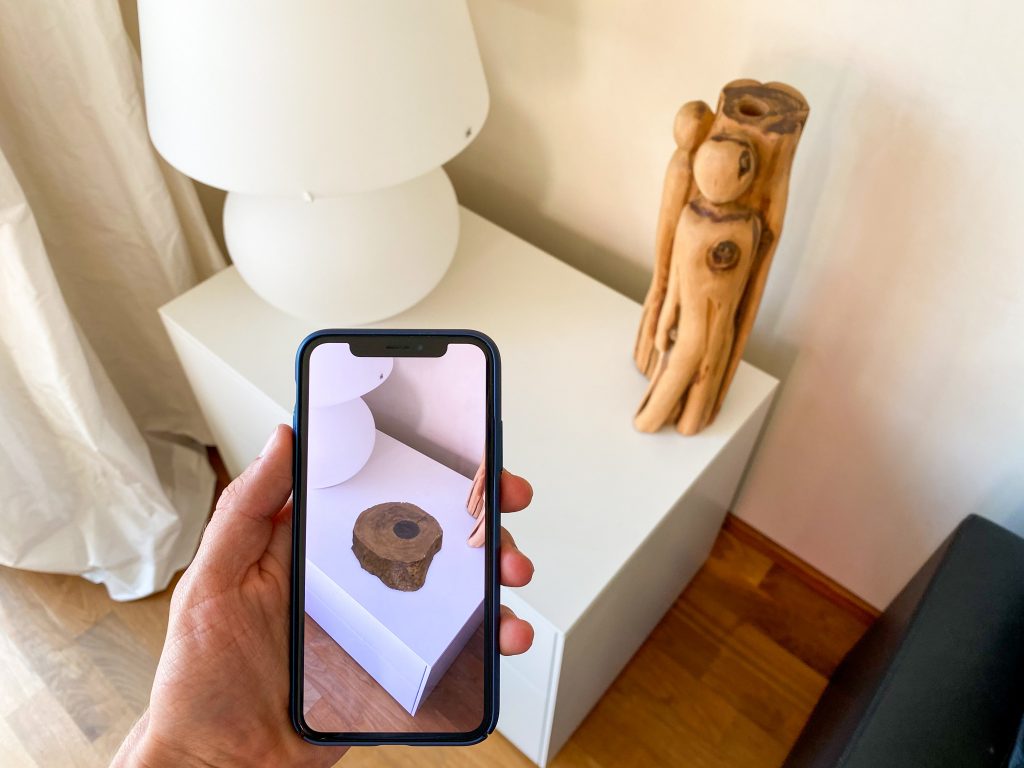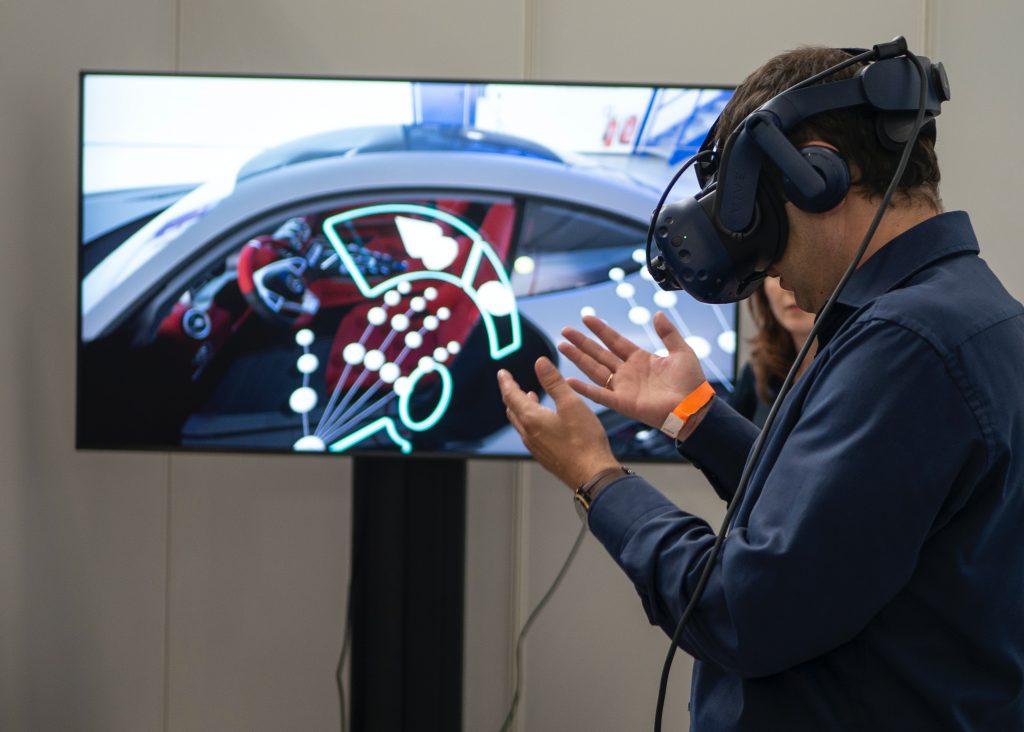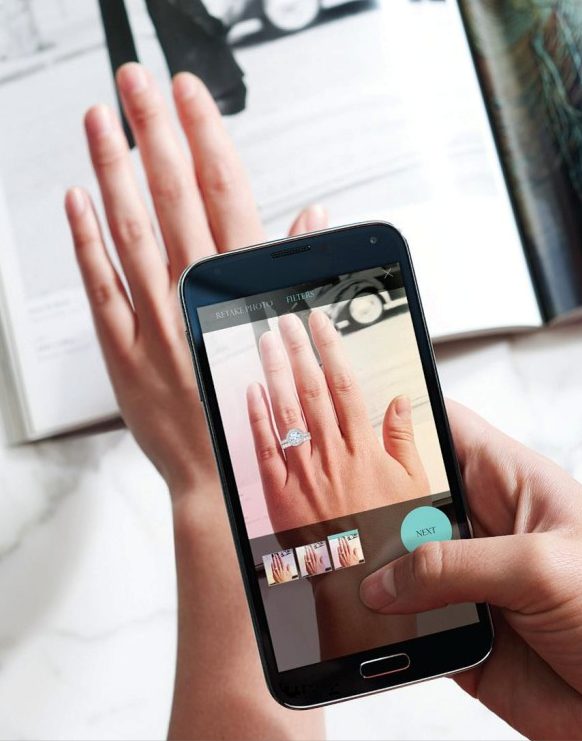Augmented Reality (AR) has received increased attention over the last years from the market as well as marketers. It has the potential to become the next big marketing thing. But still, it has to go through a series of evolution before it can become a trillion-dollar idea in digital marketing.
Let’s understand more about the technical aspects of AR and the marketing potential of AR.
What is Augmented Reality?
AR is an emerging cutting-edge technology in marketing, it enhances the visual, auditory, tactile, and olfactory perception of users by augmenting or superimposing digital content such as text, geolocation information, graphics, audios, and videos onto a live view of the physical objects and environments in real-time.
AR is a potentially disruptive technology that enriches the consumer experience and transforms marketing.
Various studies in the marketing discipline have tackled fragmented aspects of AR, such as its impact on sales or brands.
Difference between Augmented Reality (AR) and Virtual Reality (VR).

Augmented Reality
Compared with traditional media, AR and VR aim to provide users with enriched, interactive, and immersive media experiences. While VR creates a fully computer-generated virtual environment, AR enriches the real environment by integrating context-aware digital information.

Virtual Reality
AR is becoming a disruptive technology that will transform marketing in the coming years.
AR marketing and AR-based product presentations have the potential to create extraordinary shopping experiences across the customer journey.
Augmented Reality marketing.
Augmented reality marketing refers to the application of AR in marketing to enhance consumers’ experiences, increase their satisfaction, shape their behaviour, and boost companies’ revenues. Specifically, AR not only improves online experiences and engagement but creates novel and fantastic on-site experiences.
AR brought net economic benefits of $33 billion in 2019. Furthermore, the benefits will reach $338.1 billion by 2025 and $1.0924 trillion by 2030.
“Seeing is believing” report released by PwC
AR engages consumers in online settings by providing real-time direct product/service experiences in various aspects of marketing. Specifically, it overcomes the limitations of online shopping by allowing prospects to try on products, such as
Everything is virtual without having to interact physically with them.
AR-empowered advertisements are more informative, novel, entertaining, and complex, which leads to positive consumer responses and helps advertising campaigns stand out compared to traditional advertising.

Tiffany & Co Augmented Reality Marketing
The major online retailing platforms that have adopted AR as a part of the marketing strategy are
As well as leading brands that have devoted lots of efforts to introducing various forms of AR are
- Tiffany & Co. (Android App)
- L’Oréal (Makeup Genius),
- Mister Spex (https://www.misterspex.co.uk)
- Sephora (Virtual Artist)
- Nike (Nike App Ad),
- Converse (Converse App Ad),
- Zara (AR Windows Ad),
- IKEA (IKEA Place iOS App),
- Mini (AR Glasses Ad ), and
- Lego (Lego Playground AR App Ad)
Augmented Reality marketing response.
AR characteristics such as interactivity, vividness, augmentation, informativeness, novelty, quality, reality congruence, anthropomorphism, and sensory control modality affect product-related outcomes.
Outcome variable
| Application area | Category | The outcome that can be measured |
| Retail | Technology-related | Consumers’ attitude toward, satisfaction with, adoption/use intention of, continued use/reuse intention of, and recommendation intention of AR technology/AR retail application |
| Product-related | Consumers’ product attitude, product purchase intention, willingness to pay a price premium, and WOM intention | |
| Brand-related | Consumers’ brand attitude, perceived brand personality, and brand purchase intention | |
| Tourism | Technology-related | Tourists’ attitude toward, adoption intention of, satisfaction with, and recommendation intention of AR technology/AR tourism application |
| Tourist destination-related | Tourists’ knowledge acquisition of, visit intention of, satisfaction with, and memory of tourist destinations; tourists’ choice of products and willingness to pay a price premium in tourist destinations | |
| Advertising | Advertisement-related | Consumers’ attitude toward advertisements |
| Brand-related | Consumers’ brand attitude and brand liking | |
| Product-related | Consumers’ product purchase intention |
Augmented Reality brand-related outcomes.
Compared with traditional advertising, AR advertising improves consumers’ attitudes toward advertisements, enhances their emotional responses (i.e., physiological arousal), and leads to higher product purchase intention or willingness to pay.
AR advertisements have a positive impact on consumers’ attitudes toward the brand. Consumers’ perception of the advertisements’ entertainment value partially mediates the effect.
AR does not per se guarantee more positive affective responses; rather, they depend on the technical implementation of AR features and customers’ AR expertise, among others.
Vera Zanger
AR interaction type (i.e., instrumental vs. hedonic), advertisement context (i.e., realistic vs. imaginative), and product type (think vs. feel) impose significant impacts on brand liking.
The positive effect of AR advertising on consumers’ product purchase intention is partly mediated by their entertainment value perception of advertisements or fully mediated by their emotional responses (i.e., physiological arousal).
AR, we found, can trigger purchase and WOM intentions, but these positive effects are not guaranteed.
Vera Zanger

